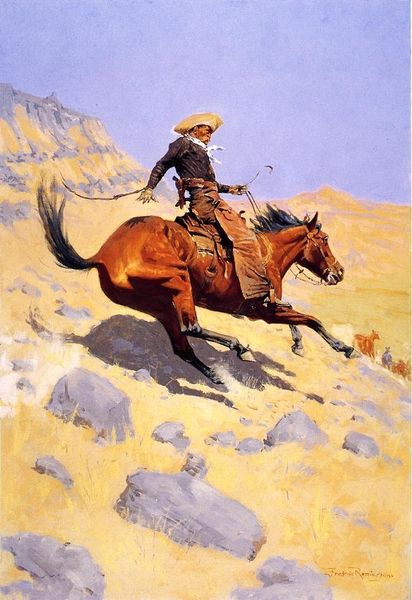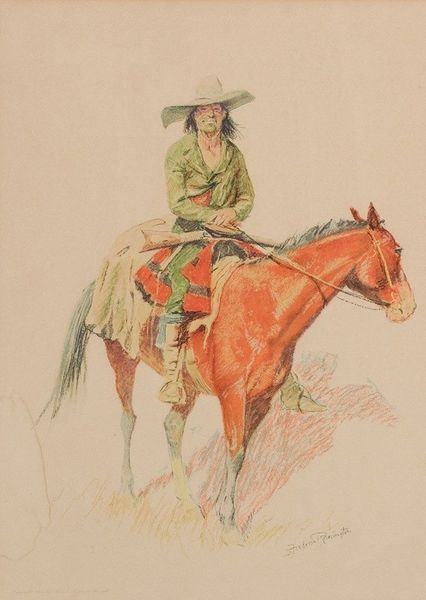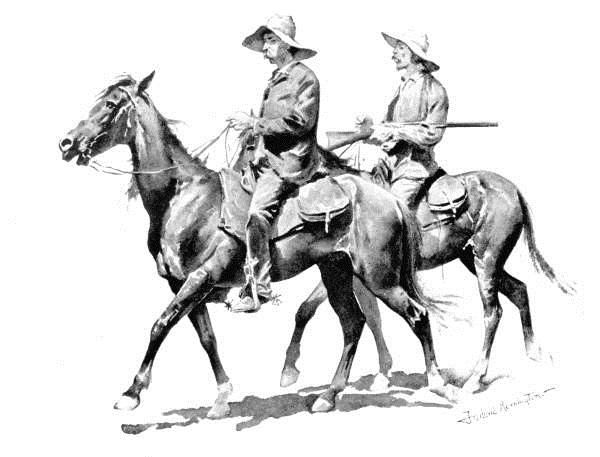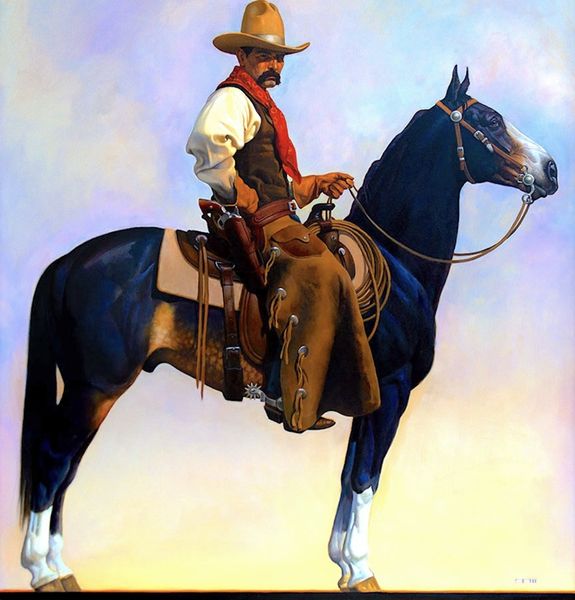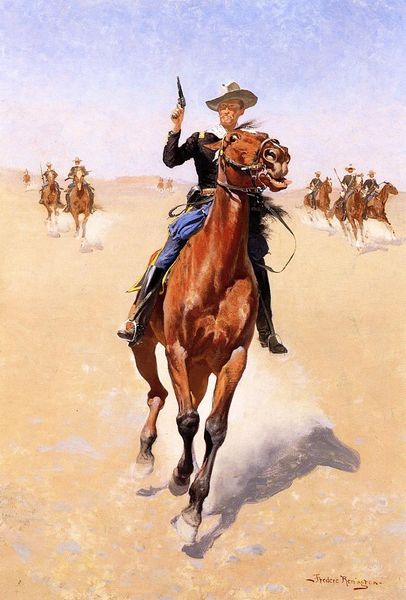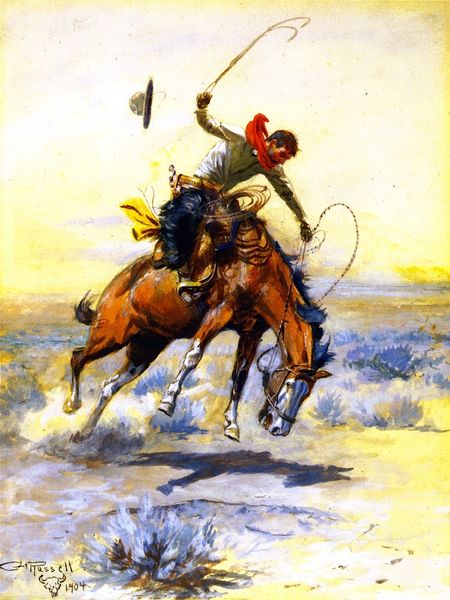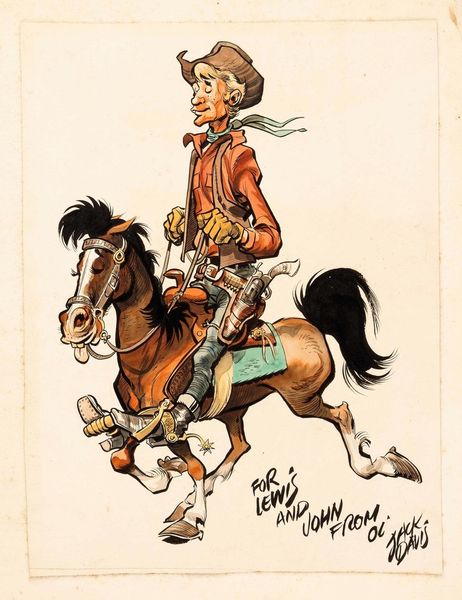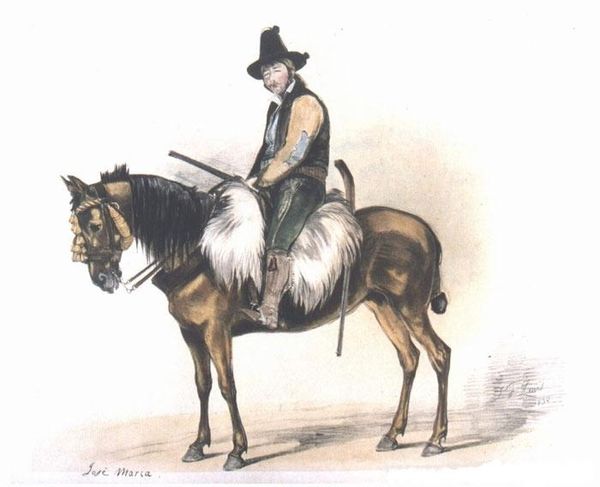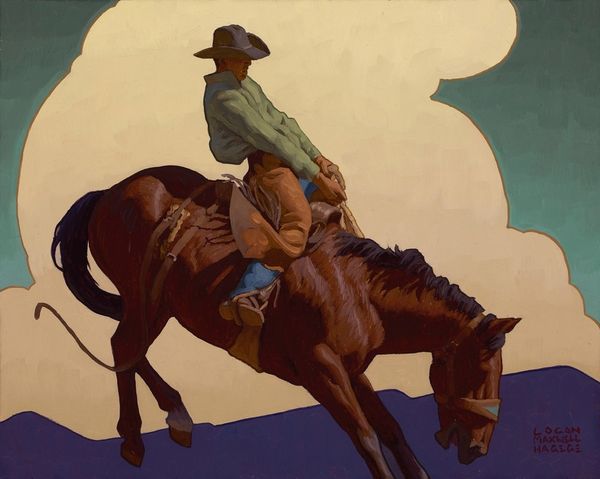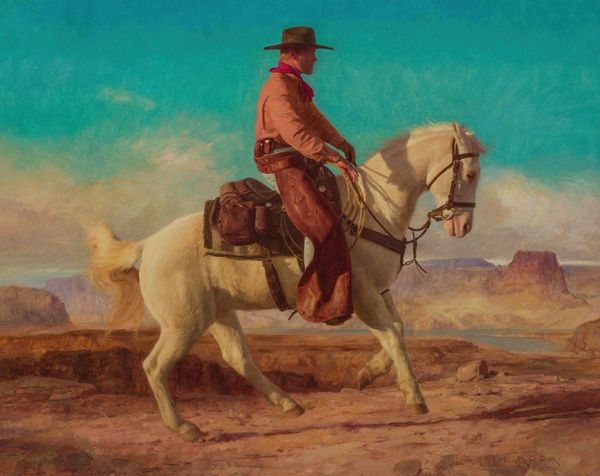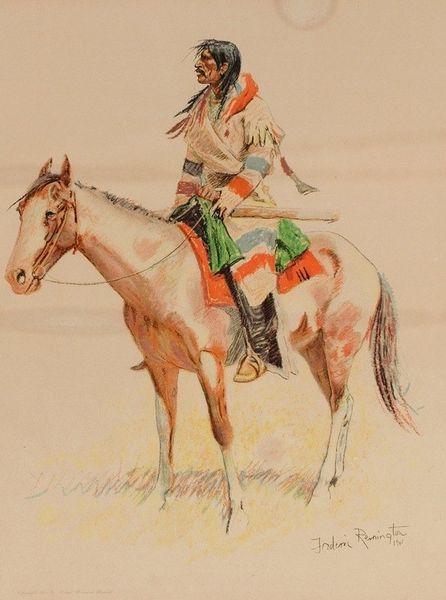
Copyright: Public domain
Editor: This is Frederic Remington’s “Arizona Cow-boy” from 1901, a drawing done with pencil. There's something incredibly vivid and lively about it. How would you begin to approach a work like this? Curator: Initially, one is drawn to the surface of the artwork. The meticulous strokes create varied textures that invite closer scrutiny. Note the cross-hatching that shapes the horse’s body, the careful blending on the cowboy’s chaps, and the suggestive use of negative space to depict light. How do you see those formal choices functioning within the work? Editor: I think the hatching and blending you mention bring a sense of movement and realism. It gives volume to the figures, even though it is just pencil. But it's not photographic, it feels like capturing an impression of a scene. Curator: Precisely. We observe how Remington manipulates line and tone to create depth and volume. The limited color palette allows us to focus on the interplay of light and shadow. Where does your eye travel first, and what formal elements lead it there? Editor: I think I noticed the chaps first, the dark shadow and detailed line-work pulls my attention to it. They frame the figure. I like how he only hints at the background, that lets me focus on the subject. Curator: Consider the strategic use of contour and the economy of detail. How do these choices affect your understanding of the depicted subject? The treatment of the horse, for example. Does the artist attempt to give equal treatment to both horse and rider? Editor: I think it’s a brilliant depiction of the cowboy figure! Thank you for bringing to light the techniques used, I had not understood the artistic purpose behind them. Curator: My pleasure. It is rewarding to decode how the artist used form to create a truly captivating scene.
Comments
No comments
Be the first to comment and join the conversation on the ultimate creative platform.

